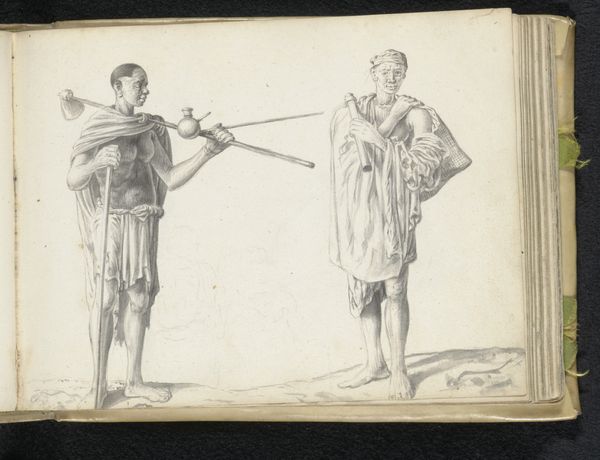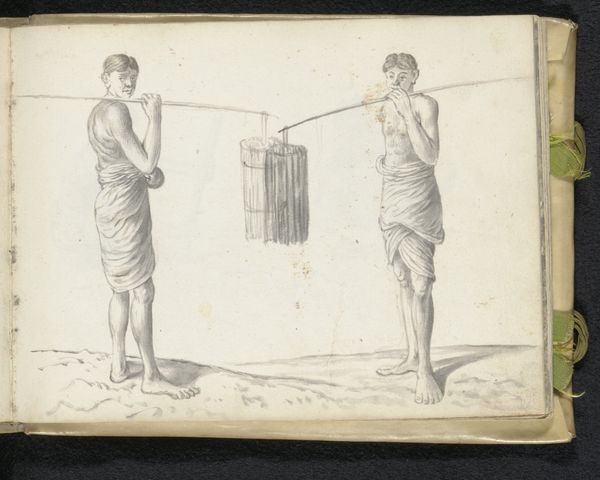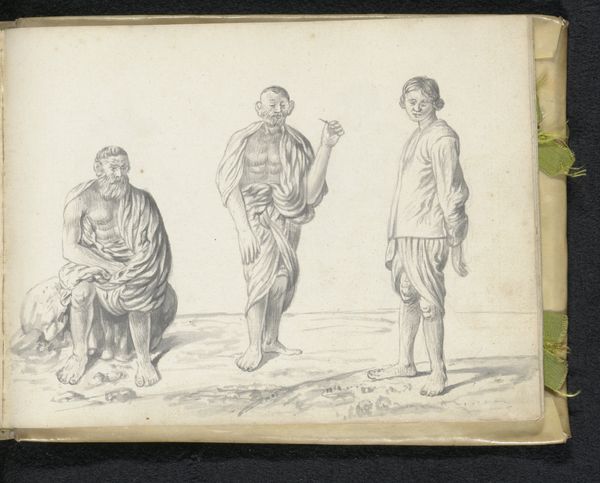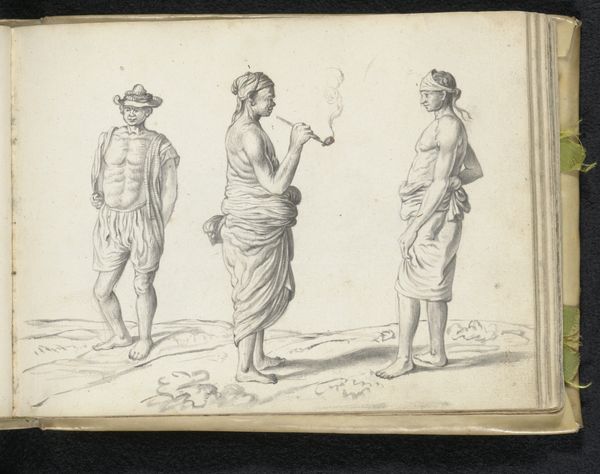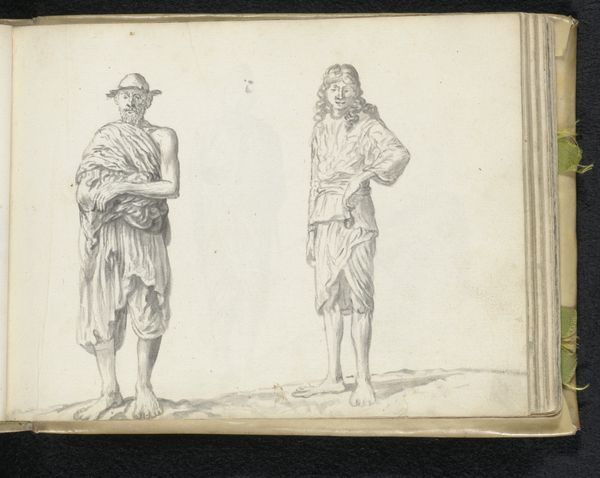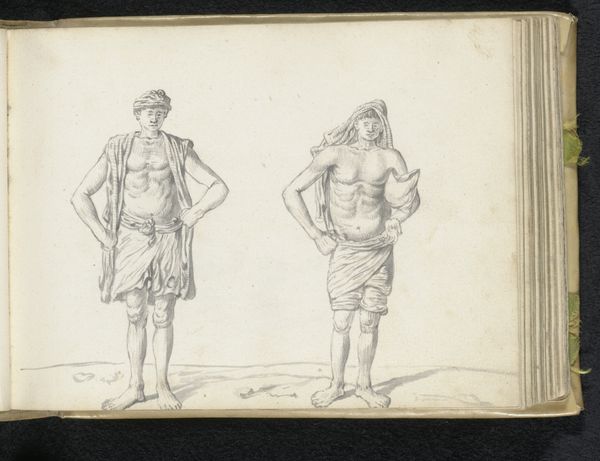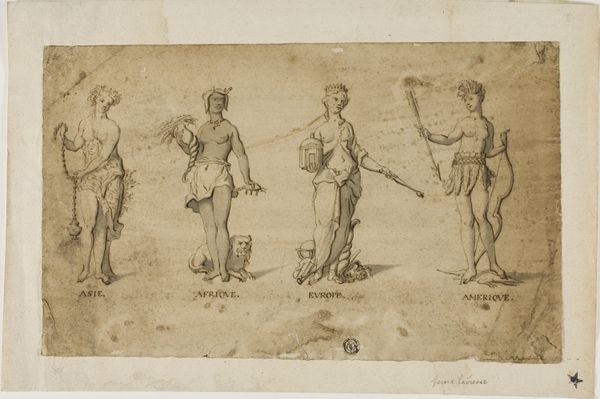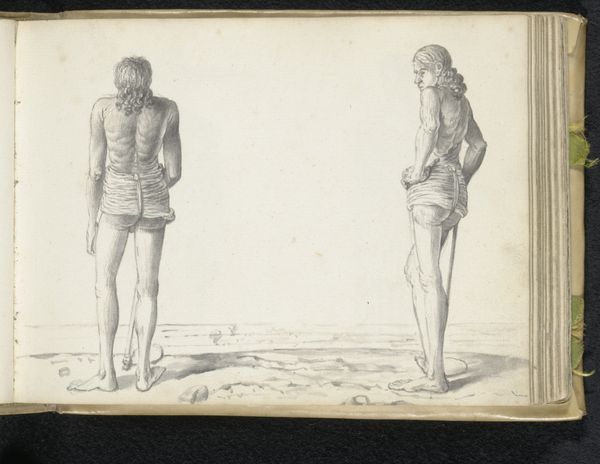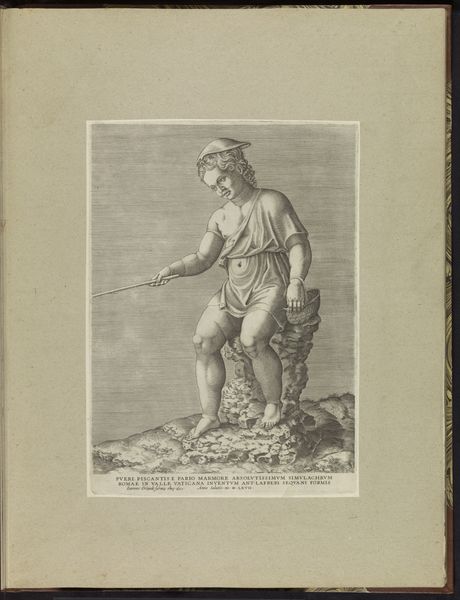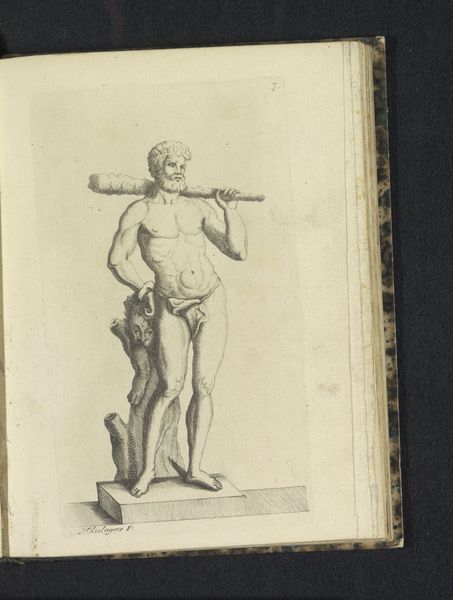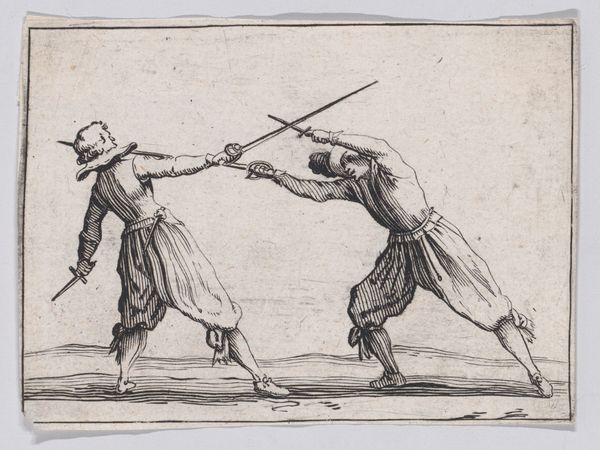
drawing, pencil
#
drawing
#
dutch-golden-age
#
coloured pencil
#
pencil
#
genre-painting
#
realism
Dimensions: height 148 mm, width 196 mm
Copyright: Rijks Museum: Open Domain
Esaias Boursse made this drawing of "Two Sinhalese Tillers" using graphite sometime in the mid-17th century. Boursse worked for the Dutch East India Company, which dominated trade in the Indian Ocean during that period. Here, the artist shows us two men from Sri Lanka, then known as Ceylon, engaged in agriculture. The way they are depicted and the presence of the drawing in a sketchbook suggests it served as a record for a European audience. Consider the gaze of the men. They look directly out at the viewer, as if aware of being observed. The drawing also reduces them to types. Their individuality is suppressed in favor of showing them as examples of local labor. To fully understand this drawing, we must consider the power dynamics of colonialism and the Company's role in shaping European perceptions of the East. Documents in the Company archives may provide further insights into the artist's intentions and the reception of such images in the Netherlands. These sources help us interpret the drawing not merely as a neutral depiction, but as a product of a specific historical context, intertwined with trade, empire, and representation.
Comments
No comments
Be the first to comment and join the conversation on the ultimate creative platform.

